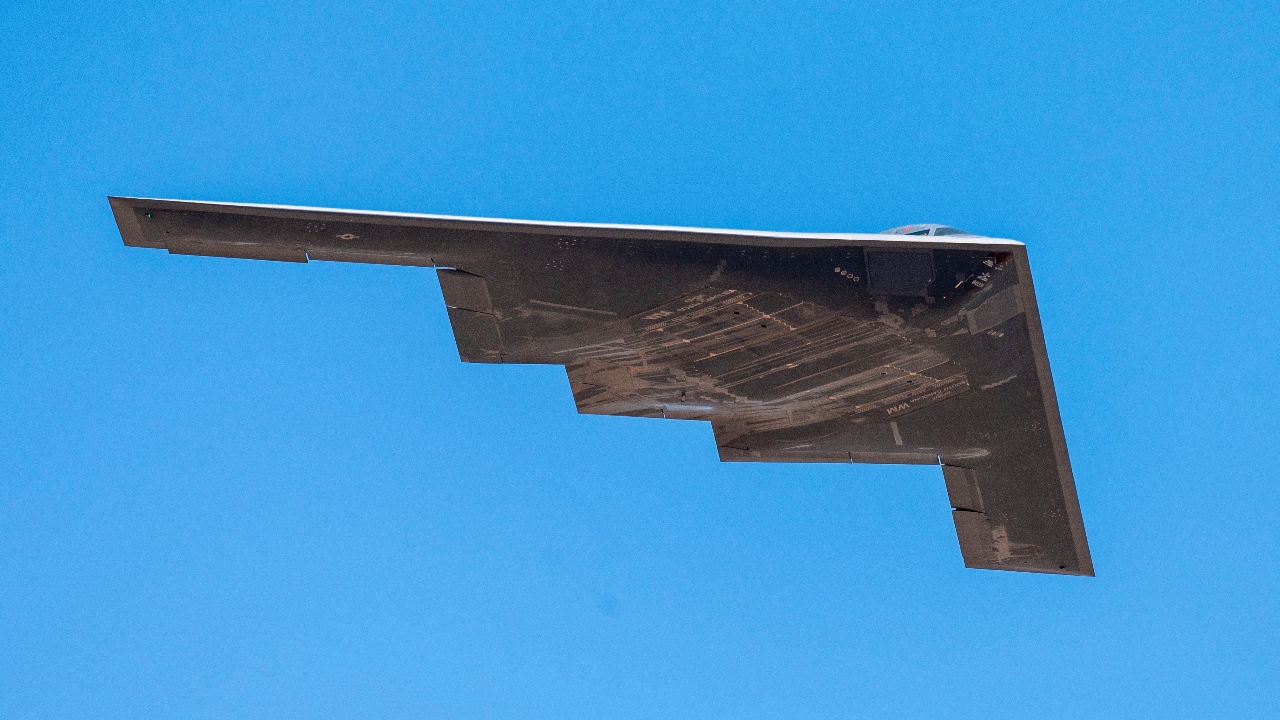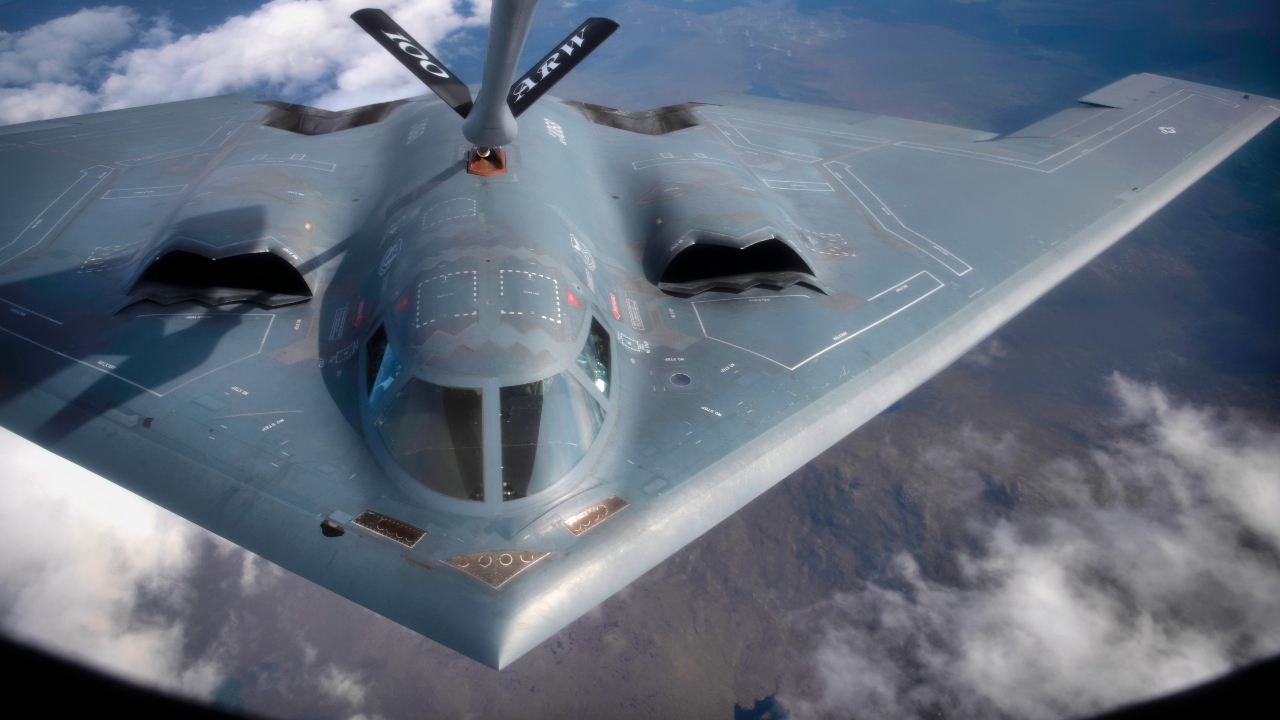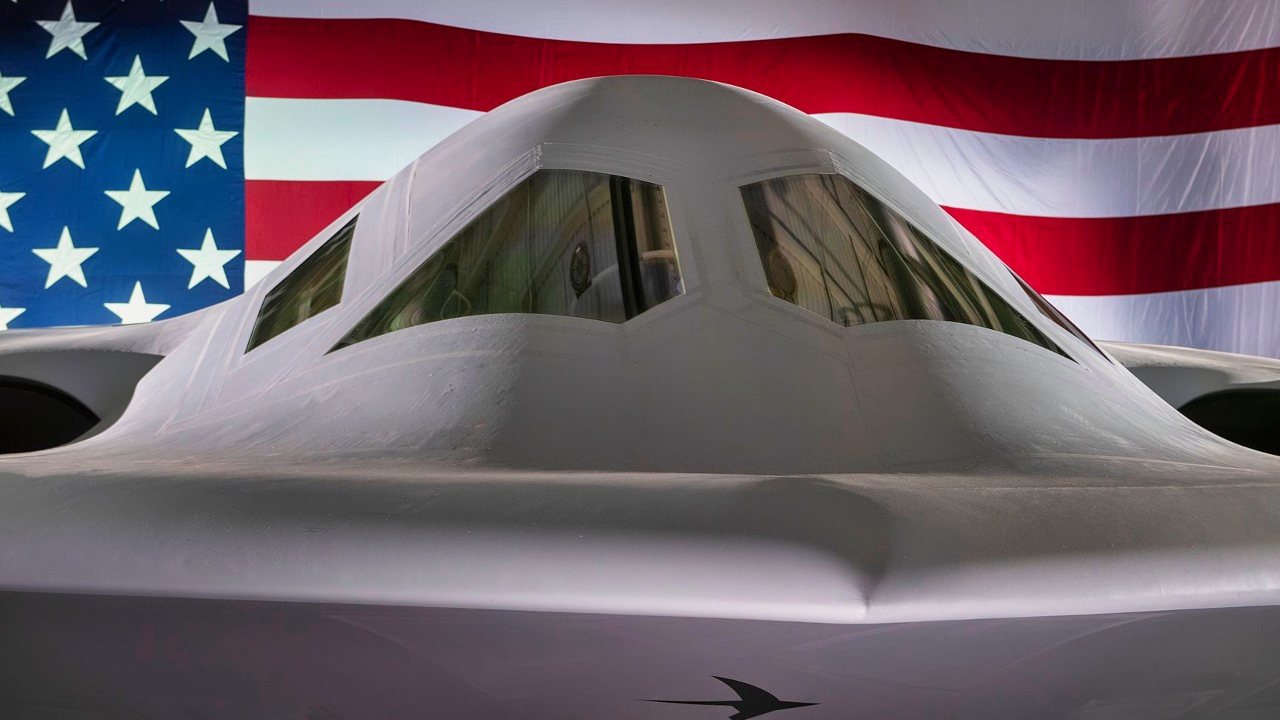Key Points and Summary – The U.S. Air Force’s fleet of B-2 Spirit stealth bombers is a “high-value, low-density” asset, with only 19 aircraft remaining in service.
-The original Cold War plan for 132 bombers was slashed due to the B-2’s staggering $2 billion-plus per-plane cost and its extreme maintenance burden, driven by its delicate stealth coatings.

A B-2 Spirit makes a low pass flyover as part of the Warriors over the Wasatch airshow at Hill Air Force Base June 29, 2024. The 2024 Warriors over the Wasatch airshow was centered around the “Breaking Barriers Together” theme, celebrating one community. The B-2 Spirit, the predecessor to the new B-21 Raider, has been the U.S. Air Force’s premiere stealth bomber for more than 20 years. (U.S. Air Force photo by Senior Airman Jack Rodgers)
-This small fleet is now stretched thin, limiting the U.S. ability to respond to multiple global threats.
-The new B-21 Raider program is being procured with this lesson in mind, with a focus on building a much larger, more sustainable “campaign force” of at least 100 bombers.
Why the U.S Air Force Has Only 19 B-2 Spirit Stealth Bombers
The U.S. Air Force’s fleet of B-2 Spirit stealth bombers stands at just 19 operational aircraft—a modest number with significant strategic implications.
These legendary, world-renowned bombers are the only dedicated stealth heavy bombers in service capable of striking contested, air-defended areas with both nuclear and conventional munitions.
But why did the U.S. opt to field so few? What are the operational consequences? And how will the next-generation bomber compare in terms of numbers?
Origins, Plans, and Cuts
The B-2 bomber first emerged during the Cold War under the Advanced Technology Bomber (ATB) program, which aimed to develop a stealthy heavy bomber capable of penetrating Soviet air defenses.
The original procurement was reportedly as high as 132 aircraft, but only a fraction of that number—bombers— were eventually manufactured. Later reductions took that target down to 75, then ultimately to 21.

B-2 Bomber Elephant Walk. Image Credit: Creative Commons.
In 2008, one aircraft was lost in a crash, and the remaining fleet of 19 is still operational – and awaiting support from the next-generation B-21 Raider.
So, why were the numbers slashed? Chief among them, perhaps, was the fall of the Soviet Union and the post-Cold War defense drawdown that reduced the perceived need for large heavy-penetration bomber fleets.
Combine that with the B-2’s high unit costs and sustainment/maintenance demands, throw in the competing fighter, airlift, and missile priorities, and it’s clear why the bomber budget was squeezed so much .
Operational Constraints and High Maintenance Burden
The B-2 is famous for a reason. Its design is visually impressive, but it is also a marvel of low-observable and long-range technology. Those features that make the plane such a marvel, however, are also the reason why it costs so much to maintain.

A U.S. Air Force B-2 Spirit assigned to the 509th Bomb Wing, Whiteman Air Force Base, Missouri, is refueled by a KC-135 Stratotanker assigned to the 351st Aerial Refueling Squadron, RAF Mildenhall, during the Bomber Task Force training exercise over England, Aug. 29, 2019. Training with partners, allied nations and other U.S. Air Force units contributes to global readiness and enables the strengthening of enduring and strategic relationships throughout the theater. (U.S. Air Force photo by Tech. Sgt. Emerson Nuñez)
The stealth coatings used to minimize the B-2’s radar signature were and remain a considerable part of its maintenance demands.
In fact, it’s arguably the most significant problem the Air Force faces in terms of sustaining these aircraft. Downtime for coating repairs is extensive, and the aircraft must be kept in special hangars to maintain its skin.
This problem is well known, often cited, and has been flagged for decades. For example, the Government Accountability Office flagged support and operation cost issues in a cost report dating back to 1993.
But more than just maintenance, it’s important to note that the relationship between fleet size and cost is self-reinforcing, meaning that having a smaller fleet carries higher per-aircraft costs.
With 19 operational airframes, the margin for maintenance downtime, attrition, and concurrent global operations is very thin.
If too many aircraft are in maintenance and if global operations require their support, the U.S. would be forced to lean on other, older bombers while its B-2s are being repaired.
How Many Do We Need?
A small fleet, no matter how capable the aircraft are, limits options. It is abundantly clear that the U.S. bomber force currently lacks scale, and analysts have long noted that a fleet of just 19 B-2s constitutes the smallest fleet of any U.S. strategic aircraft.
The U.S. Air Force, the Pentagon, and analysts know this. It’s why procurement for the B-21 Raider program is already significantly higher than for the B-2, and why analysts continue to push for it to be increased further.
A minimum of 100 aircraft are expected to come from the B-21 program – the successor to the B-2. Analysts from this outlet and elsewhere, however, argue that more than 145 B-21 bombers would be a better move.

The B-21 Raider was unveiled to the public at a ceremony December 2, 2022 in..Palmdale, Calif. Designed to operate in tomorrow’s high-end threat environment, the B-21 will play a critical role in ensuring America’s enduring airpower capability. (U.S. Air Force photo)
Others say 200 is the sweet spot, providing sufficient global reach and flexibility in force posture.
The risk of maintaining a small fleet of bombers should be obvious: if multiple theatres require long-range precision strike – for example, Europe and the Indo-Pacific at the same time), a small fleet offers limited capacity.
The combination of small numbers, high maintenance demands, and a requirement for a visible global deterrence complicates the U.S. strategic picture.
Thankfully, though, the B-21 Raider program is working to solve this problem—and is being developed explicitly to overcome the limitations of the B-2 in terms of scale and capabilities.
In August 2025, the U.S. Air Force’s top bomber officer, Air Force Maj. Gen. Jason Armagost said that he is most excited by the sheer number of B-21 aircraft planned.

The B-21 Raider was unveiled to the public at a ceremony December 2, 2022 in
Palmdale, Calif. Designed to operate in tomorrow’s high-end threat environment, the B-21 will play a critical role in ensuring America’s enduring airpower capability. (U.S. Air Force photo)
“That’s what I’m most excited about,” he continued. “Sixth-generation stealth brings with it, it brings its own set of pretty amazing capabilities, but what I’m most excited about is the ability to build a campaign force,” Armagost said.
In the end, the B-2 program shows what happens when cost and complexity limit production. The Air Force got unmatched capability, yes, but not enough of it to meet global demand. The B-21 Raider will fix that problem, but only if production stays on track and funding remains consistent.
About the Author:
Jack Buckby is a British author, counter-extremism researcher, and journalist based in New York. Reporting on the U.K., Europe, and the U.S., he works to analyze and understand left-wing and right-wing radicalization, and reports on Western governments’ approaches to the pressing issues of today. His books and research papers explore these themes and propose pragmatic solutions to our increasingly polarized society. His latest book is The Truth Teller: RFK Jr. and the Case for a Post-Partisan Presidency.
More Military
Nimitz-Class Aircraft Carrier USS Carl Vinson Has a Message for the U.S. Navy
The Navy’s New DDG(X) Destroyer Looks Like a Missile and Laser Machine
Germany’s Big F-35 Fighter Purchase Comes Down to 1 Word
Eurofighter Typhoon vs. JAS 39 Gripen E: Who Wins Summed up in 4 Words
JAS 39 Gripen E vs. Dassault Rafale Fighter: Who Wins in a Fight Summed Up in 4 Words










